If I were to ask you what the one thing that defined Wayne Static’s music was, what would you say? If you answered, the unique and highly distinctive guitar sound behind Static-X’s alternative metal anthems, you’re onto something. Few guitarists in the world of metal have left such a loud and resonating echo in the pantheon of rock as Wayne Static. A rebel in all senses, his lacerating riffs challenged the boundaries of traditional metal and alternative music.
Static’s inspiring guitar journey tells a fascinating story of risk, refusal to conform, and a relentless pursuit of inventiveness. His iconic playing skills, combined with a rigorous selection of models and gear rig, embody his individuality and distinctiveness. As a respected figure in the world of guitar journalism and a dedicated musician myself, I am delighted to delve into the world of Wayne Static’s guitars, the axes that gave voice to his profound expressions.
So prepare yourself for sonic exploration as we unpack the robust guitar arsenal of this alternative metal legend. We’ll traverse Wayne Static’s symbiotic relationships with Gibson and Epiphone, his flirtation with ESP and LTD guitars, and navigate through his delicate and complex guitar set-ups. We’ll also delve into the nuanced technical skills that made Wayne Static’s guitar playing so unique, his signature models, and answer some frequently asked questions about this guitar virtuoso.
Welcome to a deep dive into Wayne Static’s guitar universe – a contention, a legacy, and a journey there’s something undeniably interesting to learn about. Strap in and tune up; the axe is mightier than the sword after all.
The Guitar Models Wayne Static Used
Wayne Static’s Relationship with Gibson and Epiphone
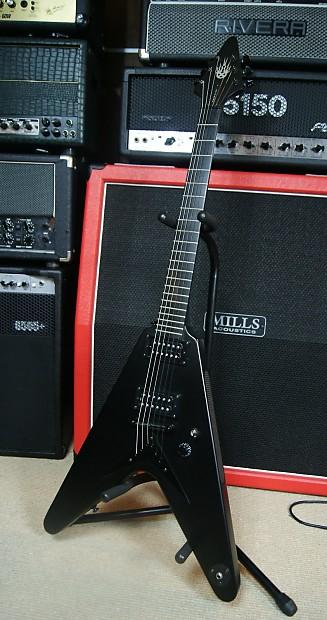
Before digging into Wayne Static’s use of other models, it is crucial to examine his profound attachment to Gibson and Epiphone. I understand the allure of iconic brands such as these, having played both during my guitar journey, and can attest to the impact they had on Static’s music.
Gibson Flying V, I believe, was a real game-changer for Wayne. Known for its unique design and rich, powerful tones, this model emerged as an extension of his personality on stage. The eccentric V-shaped guitar reflected not just his love for non-conventional aesthetics but also his preference for a high-sustain sound, vital in Static’s high-energy performances.
Moving onto the Gibson Explorer, Wayne’s choice of this guitar stands testament to his fondness for punchy sound and sheer playability. The real strength of this model lies in its humbucking pickups and solid mahogany body, delivering both strength and depth in tone. This aligned perfectly with Static’s aggressive, rhythmic playing style, allowing him to create eccentric high-gain tones.
The Epiphone Flying V was another favorite. While its design is akin to the Gibson Flying V, the Epiphone variety offered more affordability, proving an attractive choice for many guitarists, including Wayne. This model’s balanced tones and reliable tuning stability perfectly fit into Wayne’s varied sound approaches, proving its worth time and again in his performances.
To say that his journey would have been remarkably different without these Gibson and Epiphone lifelines would be an understatement. Through these models, Static crafted a sound aesthetic that resonated with his vision and enriched his performances, making his relationship with these brands a pivotal part of his musical journey. As we progress to explore further guitar models preferred by Wayne, it’s clear that the Gibson and Epiphone posts significantly influenced his overall sound template.
Wayne Static’s Use of ESP and LTD Guitars
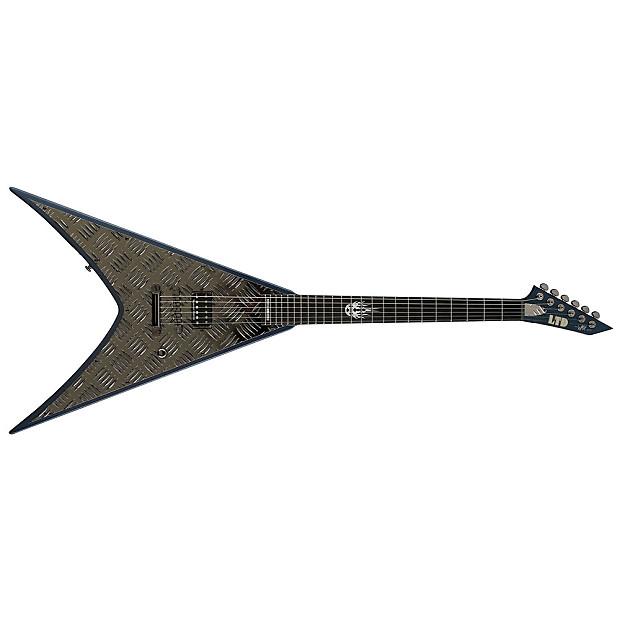
As a contemporary musician, my experiences and understanding grant me insights into Wayne Static’s profound connection with ESP and LTD guitars. Pivotal to his unmistakable sound were the instruments he selected. His choice of strumming tools drastically shaped his tone, asserting his distinctive sonic identity.
ESP guitars were a distinctive part of Static’s musical journey. These guitars are renowned for their solid body construction and excellent sustain, a feature that Static leveraged to craft his signature heavy metal sounds. While other guitarists experimented with a range of brands and styles, Static found his match in the ESP, entrusting its build and sound to amplify his raw, electrifying style. The superior reliability and versatility of ESP guitars allowed him to explore and push the boundaries of his sonic landscape.
Simultaneously, LTD guitars played an integral role in Static’s gear rig. These guitars, a more affordable subset of the ESP line, are famed for their outstanding playability and durability. LTD guitars underscored Static’s belief that quality music need not be an exorbitantly expensive endeavor. His use of these guitars highlighted his focus on making his explosive, industrial metal sound accessible to a broad audience.
Static’s use of ESP and LTD guitars was not incidental; it was a deliberate choice that played a significant role in his musical output. His preference for these models demonstrated his pursuit of a precise and reliable instrument capable of delivering his raw, aggressive sound. In this sense, Static’s trust in ESP and LTD guitars was an embodiment of his unique musical vision.
Moving ahead in the journey of Wayne Static’s guitar story, we see how his choice of guitars was just the first step. Next, we’ll delve into an examination of how Static set up these tools of his trade, exploring his preferences for amplifiers, pedals, and other gear.
Wayne Static’s Guitar Equipment Setup
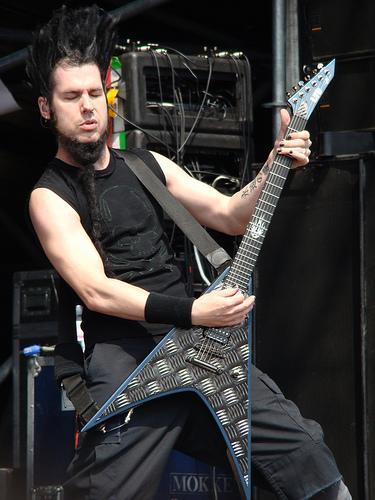
Stepping into the world of Wayne Static’s guitar equipment setup, you might feel as if you’re stepping into a laboratory. This is no ordinary rock guitarist equipment array. His rig is as unique as his sound, a delicate blend of focus, passion, and as I’ve often found from my own experience tweaking guitar gear rigs, a touch of fanaticism.
Primed and ready for his volatile onstage performances, Static’s choices were guided by the power, reliability, and brutal tonal capabilities each piece could contribute. Marshall amplifiers were his go-to pick. They’re renowned for their face-melting volume and earth-shattering tonal capabilities; an integration that fit right into his high-intensity spectrum of performance. With a blend of the iconic Marshall heads and the raw power protruding from his stacked cabinets, creating that trademark Static sound was a mission accomplished.
Ever wondered how Wayne Static created his distinct, influential sound? Let’s dive into the specifics of his gear rig.
In his early years, a critical component that helped shape his visceral sonic assaults was his customized guitar pickups. Static’s modus operandi of trading smoother fidelity for a more aggressive, sharper tone through these pickups was unconventional. Yet, it hammered home that one’s sound can be as singular as their fingerprints.
Static also had a select arsenal of stompboxes, each with a distinct purpose, peppered on his pedalboard. Experimenting with different combinations of effects, he used these tools to sculpt and hone the fierce, arresting tone that we’ve come to associate with the man. It was this particular setup that I’ve often found intriguing, pushing me to experiment with my own gear to find a voice that speaks in tones unique to my narrative.
One of the key factors that grabbed my attention was the meticulous nature in which each piece was chosen and arranged. Knowing that Static found a perfect blend of gear to support his raw, pulsating playing style was an incredible observation that taught me perspective, finesse, and audacity, all while tweaking my gear rig. His non-traditional approach to tonal variety led to an innovative and hard-hitting experience, contributing to a sound that was way ahead of its time. His setup, intimidating yet inspiring, imposed itself creating echoes of influence that reverberate even today.
In conclusion, at the heart of Wayne Static’s gear rig was the burning desire to create and experiment, pushing the sonic boundaries to uncharted territories, in true mad scientist fashion. Defining it as merely another rock guitarist equipment setup would be an understatement. It’s a concrete proof of his individuality.
From the ear-bleeding volume of his Marshall amplifiers, the raw fury of his customized pickups to the stacked pedalboard, every component was a cog in the machine that generated the iconic Wayne Static sound. As we transition towards exploring his playability, let’s carry along the lesson that the guitar gear rig plays a fundamental role, not only in shaping a guitarist’s tonal identity but also in maintaining the intensity of their performance.
Wayne Static’s Guitar Playing Skills
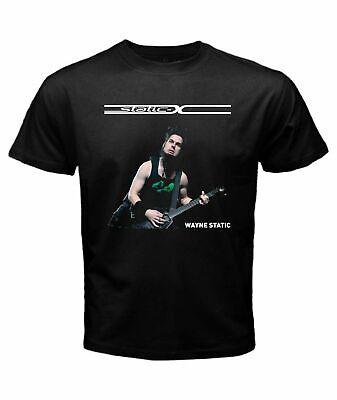
As a seasoned guitarist for more than three decades, I always find it enlightening to explore the techniques of other guitarists. Particularly, those with unconventional styles that thrust the medium into new frontiers. Wayne Static, fondly remembered as the enigmatic frontman of the alternative metal band Static-X, was one such trailblazer. His unique approach to guitar playing, often on the fringes of what was deemed typical, allowed him to craft a distinctive sound that has been largely unrivaled in the realm of alternative metal.
One of the key aspects that contributed to Wayne Static’s innovative style was his understanding and use of guitar tuning. He had a penchant for experimenting with lower tunings on his electric guitar, typically gravitating toward drop D or even lower, depending on the track. This tuning strategy helped in developing the throbbing, heavy sound that Static-X was famous for. But it wasn’t simply about layering on the distortion and letting it rip. Wayne had a keen sense of when to pull back, allowing the subtle nuances of the guitar strings to shine through, even amidst the swirling intensity of the band’s metal-infused sound.
Placing the hook here: How did Wayne Static’s innovative techniques redefine the guitar landscape in alternative metal? Well, it’s about going beyond tradition, flouting the rules, and finding new ways of expression through six strings. Wayne was never one for conformity, often venturing into sonic territories that most would shy away from. However, his determination to push the boundaries of what was expected from a guitar, particularly within the alternative metal genre, redefined the sonic possibilities and set a new paradigm for guitarists to explore.
Static’s guitar playing skills were not confined to his innovative use of tuning and distortion. He had a knack for creating catchy, memorable riffs that formed the backbone for many of Static-X’s most popular tracks. Regardless of the speed or complexity of a particular piece, Wayne always maintained a strict adherence to rhythm and timing, ensuring that the power and impact of his playing were not compromised by any technical showboating. He was very much a guitarist who knew the value of composition and songcraft, aligning his skills as a player with the needs of the song.
When one dives into the rich tapestry of Wayne Static’s guitar journey, it’s clear that his techniques and playing style were ones of instinct and intuition. His affinity for lower tunings and weighty, distorted tones, combined with his memorable riff-making abilities, formed a potent concoction that sat at the heart of Static-X’s unique sound. Furthermore, his ability to weave such complexities into captivatingly engaging songs is testament to his inherent understanding of the guitar as more than just an instrument, but a vessel for raw expression and innovation.
As we traverse further into the details of Wayne Static’s relationship with his gear, equipment setup, and signature models, we’ll see how these elements also played a significant role in shaping his pioneering sound. But ultimately, it was his guitar playing skills that truly laid the foundation, and continue to resonate in the heavy, undulating ripples of alternative metal.
Exploring Wayne Static’s Signature Models
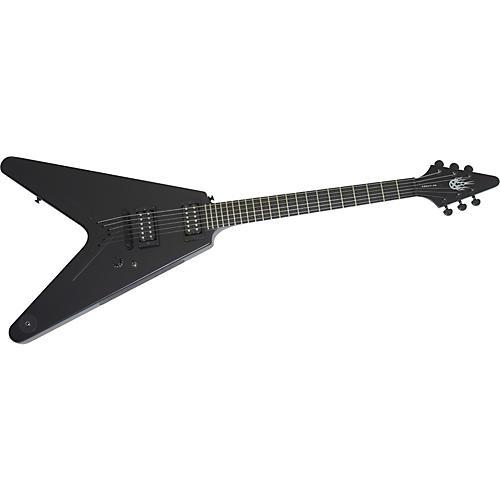
Through the span of my career, I’ve had the privilege of exploring and analyzing numerous artist signature models. Each time, it becomes profoundly clear why an artist poured their heart and soul into creating a signature model; it represents their unique musical identity and approach to the guitar. The same is true, if not more so, with Wayne Static.
Nothing screams harder about Wayne Static’s musical personality than his signature guitars. What unique touch did Wayne Static bring to his signature guitars, and how do they reflect his artistic identity? This question piques my interest both as a writer and a guitar enthusiast.
The partnership of Wayne Static and Dean Guitars culminated in two signature models that truly reflect Wayne’s unique blend of industrial metal, electronica, and futuristic visuals. Initially, they rolled out the Wayne Static “Wings” Series, complete with Static’s signature Wings logo. It was not just a guitar; it was an embodiment of Static’s bold, eye-catching presence on the stage.
Wayne’s second signature guitar, the Dean Z Series, was a streamlined beast catering to his fondness for simplicity and performance efficiency. The Z series, with its sleek finish and ‘V’ headstock, was enhanced with a single, high-output humbucker to capture his distinctive electro-metal sound. No frills, no pretense, just pure, direct tone, reflecting Wayne Static’s straightforward approach to his craft.
The Wayne Static signature models were not just instruments for making music – they were a canvas for Static’s artistic identity. Everyone who knew Wayne, his onstage persona, his affinity for dystopian, futuristic themes, would instantly recognize the embodiment of these elements in his signature guitars. Not-forget to mention, their visual appeal was off the charts.
Usually, guitars are made to represent the artist’s musical needs primarily. An artist’s identity occasionally manifests through subtle features like a logo or a unique paint job. However, the Wayne Static signature models were different; they screamed his personality, his eccentricities, and his raw power. The unique molded plastic body and the Static-X logo were more than just visual allures. They were how Wayne announced his presence – confidently, boldly, and persistently.
On paper, the specifications of Wayne’s models may appear ordinary – 22 frets, bolt-on construction, a single humbucker. Yet, static imbued them with something special, with his willingness to push his creations beyond the constraints of conventionality. It’s this blend of creative genius and practical functionality that made Wayne Static’s signature guitars such collector-worthy gems.
From my personal examining and study, I can confidently affirm that each feature, from the body material to the eye-catching logo, served a purpose and reflected a facet of Wayne Static. I admired this artist for shaping these guitars to be extensions of himself, not just instruments. Wayne Static’s signature models remind us that the guitar is not merely a sound-producing device – it’s an avenue for self-expression and individualism.
I’ll end this exploration here, but there’s still more to Wayne Static’s artistic journey. Up next, we delve deeper into Wayne’s equipment setup and how it contributed to his unparalleled sound. No discussion about Wayne Static would be complete without considering this critical aspect, just as the Static signature models were integral parts of his artistic character.
FAQs
What kind of guitars did Wayne Static use?
What gear was used in Wayne Static’s rig?
How good was Wayne Static at playing the guitar?
Conclusion
As a committed guitarist and journalist, I’ve delved deep into Wayne Static’s unique journey with his guitars and equipment setup, which undoubtedly revolutionized heavy metal music. The late frontman of Static-X and his renowned playing ability sent ripples throughout the music world, leaving an indelible footprint.
What convinced me of his profound influence on the metal music landscape? It was the deep understanding for the emotional ties we form with our guitars and gear and how Static reflected that in each of the models he played. The legendary Gibson and Epiphone models, the mighty ESP and LTD guitars, all the way to his delightful guitar extensions and the formidable prowess of his electric guitar riffs.
In particular, Wayne Static’s association with heavy metal guitars and their innovative usage showcased his transcendent virtuosity. His guitar equipment setup embodied his unique sound that still resonates with fans and musicians alike. In fact, his signature models stand as a testament to his legacy, bearing his aesthetic and sonic fingerprint for the world of music to admire and learn from. In my quest to understand his guitar journey, I’ve experienced first-hand the transformative power Wayne Static held over the strings.
So here’s to Wayne Static, the undying string magus, whose guitar journey continues to reverberate across the world of metal music. Now, armed with this enlightenment, we can all appreciate the intensity of Wayne Static’s guitar journey more profoundly, and be inspired to create our own paths.